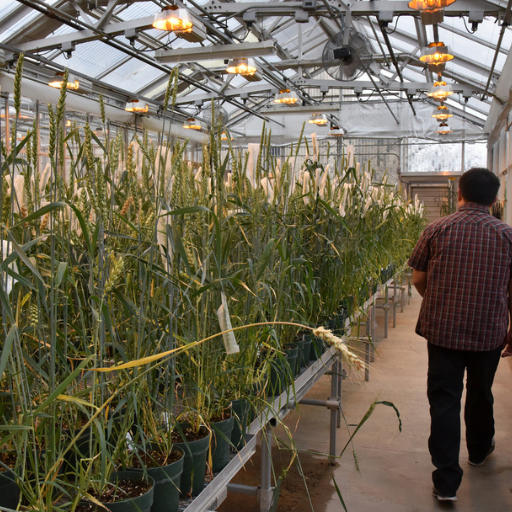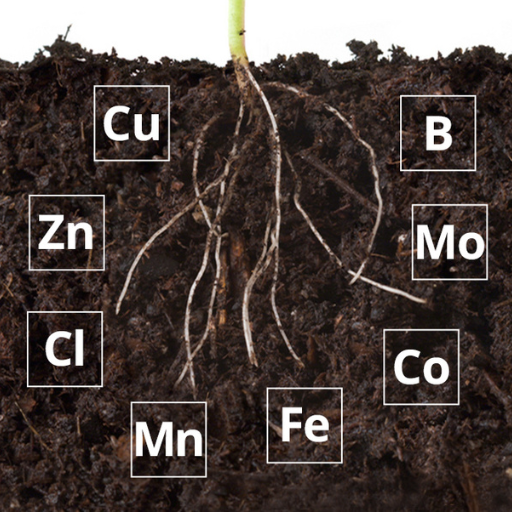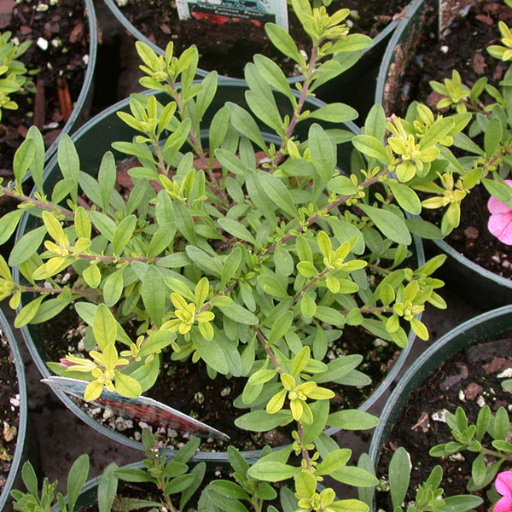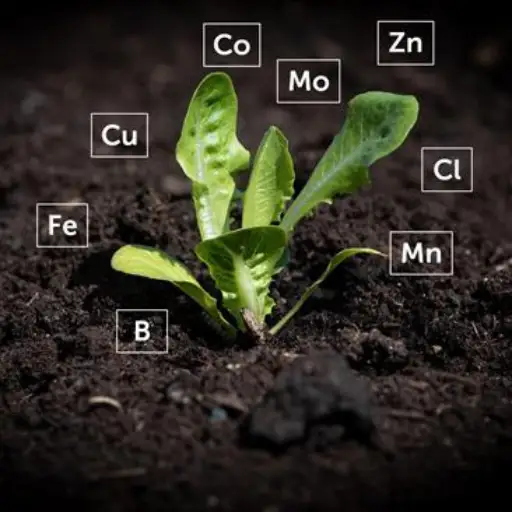Iron (Fe) plays a critical role in photosynthesis, an essential function that powers the growth and development of plants. While required in small amounts, this micronutrient is vital for the formation of chlorophyll and the functioning of various enzymes involved in plant metabolic processes. In this article, we will explore the significance of iron in plant biology, its effects on photosynthesis, and the potential consequences of iron deficiency. By understanding the intricate relationship between iron and plant health, readers will gain insights into the importance of this micronutrient for sustainable agriculture and the overall vitality of our ecosystems.
What is the Role of Iron as a Micronutrient in Plants?

How does Iron affect photo-synthesis activity?
Due to its active role in chlorophyll production and photosynthetic enzyme activity, iron is important for photosynthesis. Iron is essential in chlorophyll production, a green pigment of plants that captures the light energy necessary for photosynthesis. A iron deficiency may lead to chlorosis (yellowing of leaves), which makes the plant inefficient in photosynthesis. Also, some of the enzymes that contain iron belong to the cycle of respiration, in which ATP is produced as a result of photosynthesis. Therefore, sufficient levels of iron are the parameters to indicate maximum photosynthesis and health of plant tissues.
What is the use of Iron in the human body regarding nutrition?
Iron is one of those elements useful to plants, making them classify them as a micronutrient. Firstly, iron is a constituent supporting several essential biochemical processes, making it integral for plant growth. It is the most abundant iron in Figure 1 and is important in the formation of hemoglobin within red blood cells and other enzymes involved in energy metabolism. Second, iron is required as a cofactor for several enzymes that take part in metabolism, respiration, nitrogen fixation, and others. Another important function of iron is the action in the structure of acids and the production of mitochondrial ATP; its deficiency leads to severe consequences. Without iron, the plants could perform their activities desirably, consequently curtailing their growth and reducing their expected harvests.
How does a Plant show deficiencies in Iron?
Iron is an essential micronutrient in plants. When lacking, it is usually illustrated by a yellowing of tissues known as chlorosis, a condition affected primarily on young leaves where the yellowing occurs between leaf veins. The yellowing may be more generalized with an advance in the deficiency, resulting in a stunted and weak plant. In more extreme cases, the plants will produce leaves with dead spots and poor development of flowers and fruits. In addition, plant-specific signs or symptoms may manifest; for instance, a few may have prominent interveinal chlorosis, or some may generally become chlorotic without any patterns. Oned, one may tackle iron deficiency at its early to promote health and yield to plantsstages.
How Does Iron Deficiency Affect Plant Growth?
What are the signs of Iron deficiency?
IIrondeficiency is usually characterized by yellowness, in plants which is visominantly in the young leaves or interveinal young chlorosis. As the deficiency increases, chlorosis will also take over the older, more mature leaves. In extreme cases, stunted growth and poor stems with delayed flowering and fruiting may begin to manifest. Other plants can also show necrosis only at the tips or margins of leaves. However, symptoms such as shallow general vigor and lack of resistance to stress factors can also be observed. The speedy detection and correction of such symptoms is essential to improve the plants’ condition and further growth.
What Are The Consequences Of Iron Deficiency On The Development Of Plants?
Iron deficiency stunts plant growth mainly because it reduces chlorophyll synthesis, whichh is mandatory in photosynthesis. Iron is essential in the process as chlorophyll helps in the formation of plant structures and captures sunlight as energy forms. This, in turn, culminates into slow growth rates, low biomass, and weakness of the structure. Furthermore, other metabolic processes, particularly those involving enzymes and nitrogen fixation, which require iron, would be limited, leading to the importunity of the plants. Hence, the plants in question would be vulnerable to diseases and other stressing factors, compounding the growth problems.
How does Iron contribute to the process of chlorophyll synthesis in plants?
Again, iron is critical in one of the processes of chlorophyll synthesis because it is a constituent of enzymes involved in the chlorophyll formation stage. More specifically, chlorophyll molecules are responsible for the absorption of light energy during photosynthesis. When plants lack enough iron, they are unable to produce chlorophyll. This creates a condition of chlorosis characterized by yellowing leaves due to a lack of chlorophyll, which compromises photosynthetic activity. This deficiency not only alters the color of the leaves but also restricts the amount of energy the plant can produce later on, stunting the growth and development of the plant. Furthermore, iron is also required for the maintenance of the structure and function of the organelles where photosynthesis occurs, which are the chloroplasts and, therefore, is an integral nutrient for the chlorophyll synthesis pathway.
How Can Soil Quality Influence Iron Availability?

Which physical and chemical soil parameters should be appreciated for general iron absorption?
Several soil factors are optimal for improved iron absorption in the plants. First, the pH of the soil should preferably be neutral to slightly acidic in the range of 6.0 to 7.0 because, in alkaline soils, iron availability becomes depressed due to the formation of some insoluble compounds. Secondly, there is a need for organic matter as it improves soil corrosion and encourages more microbial activities, including the solubilization of iron. Moreover, rooted plants are in relatively uncontaminated, thoroughly drained, well-aeration soils, guaranteeing that the plants’ access to iron is within the plants. Finally, nutrient balance is also important; too much phosphorus has a high potential of interfering with iron uptake, underscoring the need for proper fertilizer application.
What is the implication of soil pH on the availability of Iron?
Soil pH broadly governs iron availability since it affects the physical forms of iron in the soils. Iron at low pH (sour) is at a higher concentration and easier for the plants to absorb. However, as the pH rises and approaches alkaline values, iron may become precipitated in the form of insoluble oxides, making it hard for plants to access. This implies that a slightly alkaline condition should not be encouraged for optimal iron absorption. Elevated pH can also compete with other people’s nutrients like phosphorus, which will, in turn, inhibit the plants from utilizing iron. Therefore, soil PH management and monitoring are essential for the plants’ welfare about iron availability.
Does organic matter play a role in Iron nutrition?
Overall, no element is too essential for plant growth, such as iron; every deficiency will result in adverse effects, so there should be ample discussions on optimal plant nutrition. Organic matter enhances iron nutrition since it expands the capacity of soils to conserve moisture and nutrients and improve the structure of soils. It generally stimulates microbes’ activities, which aid in partial bacteria that should convert the iron, among other elements, into a soluble form readily available to the plants. Also, iron absorbed or combined in the organic matter is not fixed in the soil in an unextractable form due to its ability to chelate. This interaction also helps alleviate some issues of high pH levels, which make nutrient availability less than optimal for plants, which deficiency, in turn, brings about unwanted suppressive growth of plants.
What Are the Best Methods for Iron Fertilization?

What Iron Fertilizers are in the market?
The numerous iron fertilizers that can be formulated vary depending on the soil’s prevailing conditions and the plant’s needs. The more common ones include:
- Iron Chelates: These binding organic substances enhance the dissolution of iron, restricting it in some ways and making its uptake by plants easy. They include EDTA (ethylenediaminetetraacetic acid), EDDHA (ethylene diamine di(o-hydroxyphenyl acetic acid)), and DTPA (diethylenetriaminepentaacetic acid). Chelated forms are also very good in alkaline soils, where the dominant factor is the iron’s decreased solubility.
- Ferrous Sulfate: This industrial product, ferrous sulfate, is often employed to remedy iron deficiency illness because it contains iron and is very soluble. It provides a very timely solution to the problem of chlorosis in many crop plants caused by iron deficiency.
- Iron Oxides: These include Dumpy masks and painting PB131847486, iron oxide hydrate, or ferric oxide as fertilizers, which maintain the moderately active behavior of iron in the soils where they are applied. Iron oxides indeed have potential use in soil amendment, especially in the long run, where they improve the iron content of the soils over time as required.
Their usage instructions can be derived from soil reactions, particular crops, and the rate at which results are expected. Enhancing iron availability is imperative for promoting plant health; therefore, application is essential.
What is the effectiveness of iron supplementation with foliar application?
Foliars for iron supplementation can be helpful, especially in ensuring a quick response in plants suffering from iron deficiency. This is because the iron is painted on leaves and is not reliant on iron availability in the soil, which is common in alkaline soils. When applied in the growing season, foliar application has been shown to rapidly clear chlorosis, enhancing plant health and growth. This is, however, dependent mainly on the formulation type, application timing, and the prevailing environmental conditions. It is good practice to ensure regular assessment of plant health and soil nutrient status to harness foliar iron treatment’s goodness fully.
What is the most suitable period for applying Iron fertilizers?
Iron-based fertilizers should be applied mostly in spring when the plants are in their active growth stage and during the emerging shoots of plants. Therefore, achieving correct iron application at this stage could avoid or rectify any deficiencies before they threaten plant growth. If symptoms appear if iron chlorosis reemergences, then applications during the growing season are not prohibited, especially two weeks before significant growth stages, like flowering or fruiting, for nutritional welfare. In addition, whether or not to apply iron fertilizers also depends on the degree of moisture present in the soil to facilitate the absorption of nutrients through the root system. Attending such tests on the soil can help in knowing when and whether there is a need for such applications.
How Can Farmers Ensure Adequate Iron Levels in Crops?

What soil tests can help determine Iron levels?
To check the iron content in the soil, I can perform various more particular tests. The most common one is carrying out a DTPA (diethylene triamine pentaacetic acid) test back to soil exits. The soil test is best performed in a DTPA solution to get the relatively available iron concerning what plants can utilize. Further, a Mehlich-3 test can also be carried out to determine the amount of extractable iron in conjunction with other micronutrients. I should also consider measuring the soil pH because high pH levels can be associated with low iron availability. When iron levels change at different growth periods of plants, it is a good idea to manage iron levels on a routine basis.
Of all the factors that can be controlled, which can help boost plants’ iron homeostasis?
In managing plant iron homeostasis, I can concentrate on several management practices. One includes properly adjusting soil pH in the range of 6.0 – 7.0, which is appropriate for iron availability. I also apply organic matter to revise soil structure and raise microbial activity, increasing the abundance of nutrients. I also use chelated iron fertilizers since they increase iron solubility and, thus, plant uptake. I also do crop rotation and cover cropping exercises to enhance soil quality and the risks of iron deficiency. Regularly checking plants for iron levels also quickens remedial actions.
How is Iron availability affected by Crop Rotation?
Crop rotation can play a role in iron availability in the soil by encouraging the growth of different types of root systems and microorganisms, which help increase the soil matrix and nutrient turnover. Nutritional status of the soil) Changing crops from one cultivation season to another might be improved, involving rooting depth (i.e., alternating deep-rooted and shallow-rooted crops) and exposing more nutrients in different soil profiles. Moreover, using certain cover crops such as legumes can improve soil microbial activity, whichh is important in decomposition and iron release from organic matter to more available forms for plant uptake. This practice ensures that the general health of the soils improves and minimizes the risk of iron deficiency throughout the season since iron is made available most of the time. Frequent changes in crops restock soil nutrients, thus preventing iron and other essential elements from depleting due to over-dependency.
Reference sources
- Mineral nutrient signaling controls photosynthesis: focus on iron deficiency-induced chlorosis – This article discusses how plants integrate nutrient status, including iron, to control photosynthesis.
- Role of iron in plant growth and metabolism – This source highlights the importance of iron in plant growth and its presence in photosynthetic cells.
- Growth and photosynthesis of pea plants under different iron supplies – This study examines the effects of iron supply on the growth and photosynthesis of pea plants, emphasizing iron’s essential role.
These sources should help validate the importance of iron in photosynthesis for your readers.
Frequently Asked Questions (FAQs)

Q: What are the primary and secondary macronutrients required by plants?
A: The primary macronutrients that plants require are nitrogen (N), phosphorus (P), and potassium (K), while the secondary macronutrient comprises calcium (Ca), magnesium (Mg), and sulfur (S). These macronutrients are required for protein production, energy distribution within the plant, and plant construction.
Q: How do plants uptake micronutrients like Fe and Mn?
A: Plants uptake iron (Fe) and manganese (Mn) micronutrients through their roots. These micronutrients exist in a soil solution as ions, and the factors that dictate their availability in the soil include soil pH and organic content. Thus, the uptake of micronutrients is significant in sustaining average plant growth.
Q: What are the symptoms of zinc deficiency in plants?
A: Symptoms of zinc deficiency in plants include short stature, younger leaves losing their green pigment, and the development of the roots being adversely affected. Deficiency can impair the plant’s well-being, resulting in lower crop yield and quality.
Q: What environmental factors affect the effectiveness of micronutrients in plant growth?
A: Many environmental factors, such as soil pH, moisture content, or other minerals, can affect the status of the available nutrients. For instance, high pH may restrict the ionic form of iron Fe solubility. In addition, other factors, including atmospheric and aquatic quality, can also influence nutrient uptake.
Q: In the photosynthesis process, what is the function of iron (Fe)?
A: Iron (Fe) is a vital element for synthesizing many enzymes that are part of the reaction constellations processing electronic transfers within a photoactive organism’s photosynthesis framework. Furthermore, it also contributes to producing light energy into chemical energy needed to form plant glucose using carbon dioxide and water. Therefore, it is beneficial to the process of photosynthesis.
Q: Can micronutrients be optimized using Boron (B) and molybdenum (Mo) in crop nutrition?
A: Yes, it can be observed that the application of boron (B) and molybdenum (Mo) can reinforce the micronutrient nutrition of plants. These micronutrients are involved in essential metabolic activity, and their optimum level adoption enhances the effective utilization of nutrients and thus contributes to the growth and development of plants.






